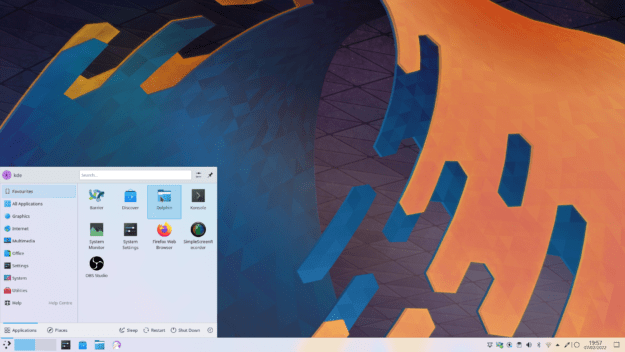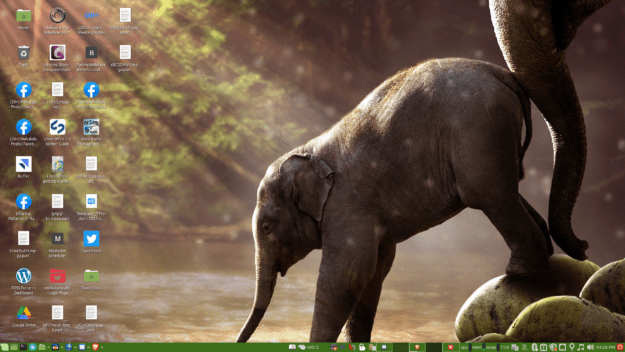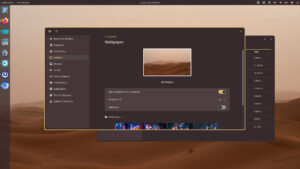There are something like 300 Linux distributions. Thankfully, the list of Linux desktop environments is much shorter, but there are still plenty.
No wonder people find that the process of moving to Linux is a little daunting. Around every corner there’s a new choice for you to make, starting with the decision to give Linux a try.
For a Mac user who want’s to move to Windows, there aren’t any choices because there’s only one Windows (you might have to choose between Windows 10 or 11, but Microsoft pretty much makes that decision for you, based on the capabilities of your hardware). For a Windows user who wants to switch to Mac, not only is there only one MacOS, but it also will only run on Mac hardware (well, if you’re a real whiz-kid and have a lot of coding chops, you can probably get MacOS to run on anything, but this article is for mere mortals).
It’s not so simple, when it comes to Linux. There are more than 300 versions of Linux (called distributions, or “distros” for short), with each one being sort of a separate operating system, although we don’t look at it that way).
If you’re already confused, then you’d better hold onto your hat because it gets more confusing. The choice of operating system also involves choosing a desktop environment (sometimes simply called “desktop,” or DE), which is the interface that displays after you boot your computer, the starting point or home base from which to launch your apps. The choice of desktop is important because it determines your workflow when you’re working on your computer.
With Windows or Mac there is no choice of DE, as each only comes with one. With Linux, however, there are probably a dozen. Maybe more.
Actually, most if not all of us Linux users consider these choices to be a good thing. You will too, after you learn your way around. But at first, all of these choices can be daunting. I know this, because I wasn’t born using Linux.
There’s good news though. To get going with Linux, you don’t need to choose your distro and DE separately, you can just choose your distro based on what DE it uses by default along with whether the distro is considered to be easy-to-use. There are a lot of distros that aren’t easy-to-use, some because they’re designed for running complex workloads, others so that the tech whiz-kids can show off their chops, gloat, and make the rest of us feel bad. My advise is don’t pay them any mind. It’s like feeding the trolls.
You also don’t need to look at each and every DE that walks in the door. Start by looking at the most popular DEs and choose from there. Again, you’ll have time to look at others after you learn your way around.
Here’s a brief overview of three of the most popular DEs for Linux, each with a short list of easy-to-use Linux distros that use that DE by default. Also, during the month of Febuary, we’ll be running some more in-depth looks of at least four desktop environments that you might find useful:

Gnome (typically written as “GNOME”): For the past 20 years or so, Gnome has been the most used desktop on Linux, and the default DE for many of the most popular Linux distributions. New users like it because it purposefully doesn’t offer as many configuration options as other DEs, such as KDE and Xfce, which means there’s less to concern new users.
Which of these Linux Desktop Environments and Window Managers would you most prefer to use?
Total Voters: 375 |
Originally, Gnome presented users with a more traditional interface (or desktop metaphor), that made it an easy transition for people coming to Linux from Windows or Mac. That changed in 2011 with the release of Gnome 3, an attempt by the DE’s developers to reinvent the desktop. While this was a highly unpopular move at first, spawning several forks of the DE (notably MATE) for users who preferred Gnome’s previous look, users eventually warmed up to Gnome’s new look and feel and the desktop continues to be the default for many Linux distributions.
In addition to being the control center for launching your computer’s apps, Gnome ships with its own word processor, spreadsheet program, database manager, presentation developer, Web browser and email client, which can be used with any other DE for those who don’t like Gnome but do like its applications. Most users, however, use other applications instead of the ones that ship with Gnome
Next week on FOSS Force, Jack Wallen will take an in-depth and detailed look at the latest version of Gnome, so keep an eye out for that.
Three easy-to-use Linux distros that use Gnome by default: Ubuntu, Pop!_OS (customized version of Gnome), and Zorin OS (designed to be easy for Windows users).

KDE Plasma: KDE is one of the oldest desktops still being maintained and developed, and back when I first started using Linux, it was the most popular Linux desktop (and for many years it was my favorite DE). Even though I no longer use it, I still like it, mainly because it’s probably the most configurable DE available, meaning there’s nothing about it that users can’t tweak to their liking. That being said, it’s plug-and-play out-of-the-box, so there’s no need for you to mess with it unless you want.
In fact, KDE remains one of my two favorite DE’s. It’s rock stable, easy to use, and as I said, configurable. Like Gnome, it comes with it’s own essential software applications. Another plus for me is that unlike Gnome, KDE presents a traditional desktop metaphor, one that would be very familiar to new users arriving from Windows or Mac.
During the second full week of February, we’ll be publishing an in-depth look at KDE by Jesse Smith from DistroWatch that you won’t want to miss.
Three easy-to-use Linux distros that use KDE by default: Kubuntu (based on Ubuntu), KDE Neon (developed by the KDE folks), and Mageia.

Xfce: Xfce started life as a desktop used primarily on older hardware, because it’s designed to be lightweight and to not put a strain on system resources. These days, however, it’s also used by plenty of people running up-to-date hardware, just because they like it. I use it as my daily driver, both because I like it and because it sips resources. Even though none of my computers are old or low on available resources, I figure why waste resources running a desktop, which is mainly just there to launch apps?
Why do I like Xfce? Well, it’s highly configurable, comes with a lot of nifty applets from which you can choose to run in your panel (I’m particularly hooked on the weather and dictionary applets), and it presents a simple interface that stays out of your way so you can concentrate on your work.
Unlike Gnome and KDE, Xfce doesn’t ship with a full set of its own applications, but don’t let that stop you. If you’re like me, you’re probably going to use LibreOffice for writing and such, Thunderbird or Evolution for email, and something like Firefox or Chrome for browsing anyway.
We’re hoping to also have a review of Xfce this month on FOSS Force, but nothing’s been scheduled yet. Stay tuned.
Three easy-to-use Linux distros that use Xfce by default: Linux Mint Xfce Edition (it’s what I use), Xubuntu (official Ubuntu flavor), and Zorin (also offers Gnome, so you can try both).
Christine Hall has been a journalist since 1971. In 2001, she began writing a weekly consumer computer column and started covering Linux and FOSS in 2002 after making the switch to GNU/Linux. Follow her on Twitter: @BrideOfLinux






Dear Christine,
Your getting started guide for desktop newbies is much appreciated.
However, it would have been worth to mention that openSUSE is not only a long-time supporter of KDE, but offers all mentioned DE , plus 8(!) more, during installation. So there is no need for a special distribution per Desktop – in openSUSE they are all perfectly integrated.
Arco Linux based on Arch, has available pretty much every Desktop Environment out there, with the ability to choose what you want to install.
It’s all about learning more about you computer and customizing your system for your particular requirements and needs.
Thanks for a great article!
Good article!
Thank you.
Besides the typical Big Three of Gnome, KDE, and Xfce, it is also worth mentioning that there are at least these popular pair of even lighterweight desktop environments; LXDE (lxde.org ) and LXQt (lxqt-project.org ).
Having frequently used Debian GNU/Linux, that particular popular distro even has a convenient GUI desktop switcher to make a selection among all the above desktop environments when logging-in.
Nice article for introducing Linux DE for beginners.
I’m sure earlier comments had good intentions to suggest additional distros and DEs, but I think the main focus of the article was to introduce small numbers to start with for beginners.
Otherwise I would have chimed in Fedora distro (voted the best distro overall of 2023 in FOSS Force, not necessarily the best for beginners or the most popular) with most DE’s available as spins or simple additional install (Gnome being the default).
As all ready said, Debian does them all! And quite well too. One could load a virtual machine with all and play several days (weeks?) at each. Then pick one. Linux can be fun.